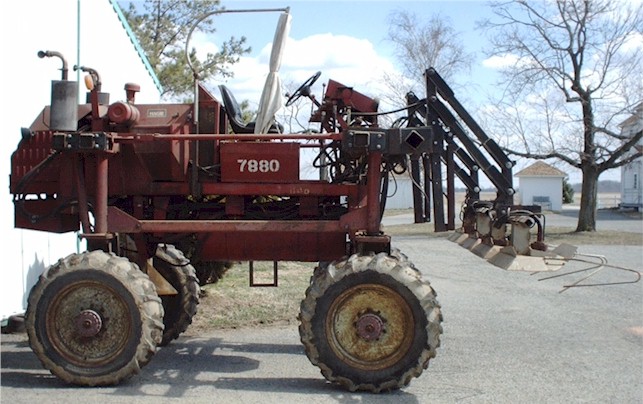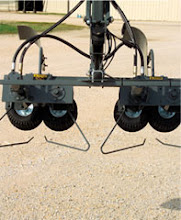But first I have some customers around Terre Haute and West Union right now with 204's Luke,This was setting 1 mile east of WU. Belongs to Jamie around Clay City, Indiana. I had a 1985 8200 and after losing the second wheel motor in 3 years decided to offer someone else the opportunity of owning a 20 year old machine. Best male knocker I've seen is an Apache sprayer with a green operator. Did as good a job as the Modern Flow silage choppers. OK, quick seed corn lesson. You cross 2 parents to produce a hybrid. One is a "male" (pollinating) and the other a "female" (seed producing) We plant the parents in a pattern, most often 1 male followed by 4 rows of female. Timing of planting is critical because the different parents may not produce pollen or silks at the same time. If you miss the "nick" the non-technical term is "screwed". Sometimes you plant them both at the same time and then flame or cut the males to delay or spread pollination. Seems really dumb pulling this through a field cutting the tops off perfectly good plants (from http://www.modern-flow.com/prod_male_row_growth_retarder.php)
 and "female" <b></b>(seed producing<b></b>)) 
Since corn plants have both reproductive parts the female must have the tassels removed before they start shedding pollen. (see http://www.varsitydetasseling.com/what.html for a better explanation) The best way is to physically walk the fields and carefully remove each tassel by hand, taking care to not pull any leaves. However, to cover the amount of acres needed most companies will mow off the top leaves just before tassel extension. 
Then they wait about a day and run wheel pullers, which have powered pneumatic tires running together 

to grab the tassels and remove them from the plant. After that a crew will either walk or ride the field on personnel carriers. 
Here is the end result. 
After pollination most companies remove the male rows. There are multiple reasons. One is ease of harvesting. If the male rows are not there you don't have to worry about them. Another is genetic purity. If they are removed they can't fall into the female rows or accidentally get mixed in. Another is yield. If they male rows are not shading or competing for water and nutrients with the female it should improve yield. From my standpoint it removes the potential volunteer corn in my soybean field next year.
Best male destroyer is Modern Flow's silage chopper (http://www.modern-flow.com/prod_male_row_forage_harvester.php)

It totally removes the plant from the field. My one reservation (OK, second. The first is the quarter million price tag) is feeding the silage when it has had all kind of 'cides (insectice/fungicide/etc) applied to the seed fields. The seed is harvested on the ear at a high moisture content  in hopes of maintaining good germination. in hopes of maintaining good germination.
More questions?
| 

 Anybody Interested in Seed Corn Detasseler Pics?
Anybody Interested in Seed Corn Detasseler Pics?